The first round of NASB 2020 editions are available from Lockman. The 2020 update is something we’ve been waiting for, and I especially wanted to see the designs that would come with it. The first set of NASB 2020’s, including the Large Print Ultrathin Reference Bible that I’m reviewing, retains the traditional design elements and was designed and typeset by 2K/Denmark. It’s available in several colors. I’m reviewing Grey Leathertex, ISBN: 9781581351750, printed in China.
The Lockman Foundation provided this Bible in exchange for an honest review. I was not required to give a positive review, only an honest one. All opinions are my own.
_________________________________________________________
This Bible is available at (includes some affiliate links)
and many local Bible bookstores
_________________________________________________________
Table of Contents
Video Review
Binding
The cover is a gray imitation leather called Leathertex. It has a verticle wood-grain pattern that looks and feels interesting. It has no printing on the front. The spine has the text and spine indications stamped, which makes them appear as a darker shade of gray.
The liner is pasted-down vinyl. The text-block is sewn. It has no trouble staying open to any page.
It has two 3/8″ ribbons. They’re single-sided, meaning they’re smooth on one side and rough on the other. It has a light gray ribbon for the Old Testament and a black ribbon for the New Testament. The overall size is 6 7/8 x 9 5/8 x 1 1/4″ and it weighs 2 lbs, 3.8 oz.
Paper
The paper is a 30gsm blue-tinted Bible paper that Lockman uses in their 1995 NASB Bibles. I usually don’t like blue paper, but this isn’t heavily tinted. It’s mostly noticeable in the gutter and it doesn’t even show up that well on camera. I find it easy enough to read, but I do prefer paper that’s off-white or ivory in color. It has a slightly rough texture that I find easy to grab and turn. It’s opaque enough that the show-through isn’t too distracting. It doesn’t have glare under direct light. The page edges are silver-gilted.
Typography and Layout
The text is presented in a double-column paragraph layout with poetry set to stanzas, OT quotes in all-caps, section headings in bold all-caps, references in the center column, and footnotes in the footer. The header shows the book name and chapter number in the outer margin and the page number in the center. Italics are used for supplied words that are not found in the original text but are needed to smooth out the English.
The layout was designed and typeset by 2K/Denmark. The typeface is 10-point, black letter. The font is dark and consistent throughout. It’s printed with line-matching and has around 7 words per line. Verse numbers are large and bold, making them easy to find. It does lessen the smoothness of reading, but not too much. The text includes letters for cross-references and numbers for footnotes. It has a large inner margin to bring the text out onto the flat part of the page.
The lines have a ragged right edge, so all of the words have the same amount of space between them. This makes it stand out from other Bibles at a glance and actually helps give the pages a little bit of “visual difference”, which I find makes it easier to keep my place on the page than text that’s right-justified. Text that is right-justified can sometimes make a page look like a sea of text and nothing stands out. I think this is one of the reasons people like to read v-b-v or like a lot of section headings.
Poetry is divided into good places. When a line needs to break, it doesn’t go to the end of the line and then places one word. Instead, it stops the line where it makes the most sense and then indents the next line for the next thought or phrase. This looks more balanced and is less awkward to read.
References and Footnotes
It has 95,000 cross-references in the center column. Those at the top correspond to the left column and those at the bottom correspond to the right column. Many pages have a blank space in the center, but there are a lot of references for study and sermon prep.
Here are a few example references to help you compare:
- Genesis 1:1 – Ps 102:25; Is 40:21; John 1:1, 2; Heb 1:10; Ps 89:11; 90:2; Acts 17:24; Rom 1:20; Heb 11:3; Job 38:4; Is 42:5; 45:18; Rev 4:11
- Deuteronomy 6:4 – Matt 22:37; Mark 12:29, 30; Luke 10:27; Deut 4:35, 39: John 10:30; 1 Cor 8:4; Eph 4:6
- Isaiah 9:6 – Is 7:14; 11:1, 2; 53:2; Luke 2:11; John 3:16; Matt 28:18; 1 Cor 15:25; Is 22:22; Is 28:29; Deut 10:17; Neh 9:32; Is 10:21; Is 63:16; 64:8; Is 26:3, 12; 54:10; 66:12
- Matthew 28:19 – Mark 16:15; Matt 13:52; Acts 1:8; 14:21; Matt 25:32; Luke 24:47; Acts 2:38; 8:16; Rom 6:3; 1 Cor 1:13, 15; Gal 3:27
- Mark 12:29 – Duet 6:4
- John 1:1 – Gen 1:1; Col 1:17; 1 John 1:1; John 1:14; Rev 19:13; John 17:5; I John 1:2; Phil 2:6
- John 3:16 – Rom 5:8; Eph 2:4; 2 Thess 2:16; 1 John 4:10; Pev 1:5; Rom 8:32; I John 4:9; John 1:18; 3:18; 1 John 4:9; John 3:36; 6:40; 11:25
- Acts 2:38 – Mark 1:15; Luke 24:47; Acts 3:19; 5:31; 20:21; Mark 16:16; Acts 8:12, 16; 22:16
- 1 John 1:1 – John 1:1; 1 John 2:13, 14; Acts 4:20; 1 John 1:3; John 19:35; 2 Pet 1:16; 1 John 1:2; John 1:14; 1 John 4:14; Luke 24:39; John 20:27; John 1:1, 4
The footnotes appear at the bottom of the page and are separated from the text with a line. It has a lot of footnotes. They include alternate renderings, explanations of the original languages, etc. I find them insightful and good for study.
Topical Index
Rather than a concordance, it has the NASB Topical Index. This is a huge index that’s even better than a concordance in my opinion. It provides definitions of many topics and breaks most of them down into smaller sub-topics, each with lots of references. It does include theological terms, but it handles them well and often includes multiple points of view. This is one of the best topical indexes and it’s an excellent tool for study and sermon prep. As always, use it for reference and do your own study.
Extras
It includes several extras in the front and back.
In the front are presentation and family pages on thick paper including:
- Presented to
- Marriages
- Wife’s Family Tree
- Husband’s Family Tree
- Births
- Deaths
- Occasions to Remember
In the back are several tools including:
- Introductions to the books of the Bible
- The Miracles of Jesus
- The Parables of Jesus
- Important Events in Christ’s life according to the Gospels
The tools are simple, but they’re useful. The book introductions provide a paragraph about the books’ titles and main themes. The tables provide a topic and references in the Gospels where they can be found.
Maps
In the back are 8 full-color glossy pages with 9 maps (map 6 is broken into two parts). I love the colors. They’re muted, which are not bright or bold, but they’re not washed out either.
Maps include distance, cities, empires, settlements, mountains, rivers, seas, kingdoms, annotations, and Scripture references. It doesn’t include shading, so the colors are solid, in the case of deserts, textured. It doesn’t include an index, but the names are large and the maps are clean enough that locations don’t take too long to find.
- The Biblical World of the Patriarchs
- The Exodus Route and Conquest of Canaan
- The Twelve Tribes of Israel
- The Divided Kingdoms of Israel and Judah
- The Herodian Kingdom in the Time of Christ
- Old Testament Jerusalem, (6b) New Testament Jerusalem
- The Ministry of Jesus
- The Missionary Journeys of Paul
About the 2020 Edition of the NASB
You can learn about the 2020 edition of the NASB at Lockman’s website. Here are a few things that stand out.
Textual Basis
The Old Testament uses Biblia Hebraica Stuttgartensia (BHS) and Biblia Hebraica Quinta (BHQ) where possible, and the LXX, DSS, Targums, and other ancient versions where needed. The New Testament uses the NA28 and a new textual criticism system that uses all of the Gr manuscripts that are available (this is called ECM2).
Bracketed Text
Most of the text in brackets have been moved out of the text and into the footnotes. This is the text that is considered to be added by later copyists. The note will identify that later manuscripts added the text, but it doesn’t supply information about which actually does or does not have the text. Exceptions include Judges 16:13; Matthew 12:47; Mark 11:26; Luke 17:36; Luke 22:43; Luke 23:17; and part of Luke 23:34, which they consider to have better support. Also, the ending of Mark, because it’s too large for a footnote. I’m glad that they’re at least in the footnotes rather than deleted completely.
The use of Let’s
The contraction Let’s is used where the phrase Let Us would seem like it’s asking for permission when it should be a proposal. I hadn’t thought about this before, but it does make sense. “Let us do this” can be understood as “allow us to do this”, while “let’s do this” is a proclamation that “we’re doing this.” The phrases are easy to understand in verbal communication, but in writing, we don’t have the nuances in the tones and sounds.
Gender Inclusivity
Their goal with gender language is to make it accurately understandable by the average reader. The idea is that the use of male terms, which have been understood to refer to mankind in general regardless of gender, no longer imply both genders to the modern reader. When the text is referring to both brothers and sisters, but the text has brothers, the 2020 adds and sisters in italics. They also third-person pronouns, adjectives, and more. You can see more detail in their article about gender-accurate language on Lockman’s website.
Their goal was to only add this phrasing when there was no question that women were included. As a result, where they don’t add the feminine pronouns it’s more obvious that men are specifically the subject where it’s possible that it wasn’t as clear before. As expected, this is a topic of heated debate.
Readability
The NASB 2020 is highly readable. I some instances, the accuracy doesn’t focus on what was written. Instead, it focuses on what was meant. I’m not an expert on the original languages or translation, but to me, this seems to be more similar to the CSB or NIV methodology of translation. Many of the changes seem to be made for readers that are not familiar with Scripture or those that have misunderstood Scripture.
Conclusion
Lockman’s new line of 2020 NASB’s is off to a good start with the NASB 2020 Large Print Ultrathin Reference Bible. I’m glad they got 2K/Denmark for the design. The print is dark and readable. I didn’t mind the blue tint for the paper, but I would like to see white or off-white. Most of the time I didn’t notice the blue, so it’s not a deal-breaker for me. The large and bold verse numbers are easy to find quickly, making it excellent for preaching, teaching, and following along with others. The paragraph text is still readable. The references, footnotes, topical index, book introductions, tables, and maps make it an excellent choice for study. If you’re interested in a 2020 NASB reference edition, the NASB 2020 Large Print Ultrathin Reference Bible is a good choice.
_________________________________________________________
This Bible is available at (includes some affiliate links)
and many local Bible bookstores
_________________________________________________________
The Lockman Foundation provided this Bible in exchange for an honest review. I was not required to give a positive review, only an honest one. All opinions are my own.
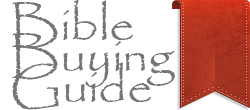
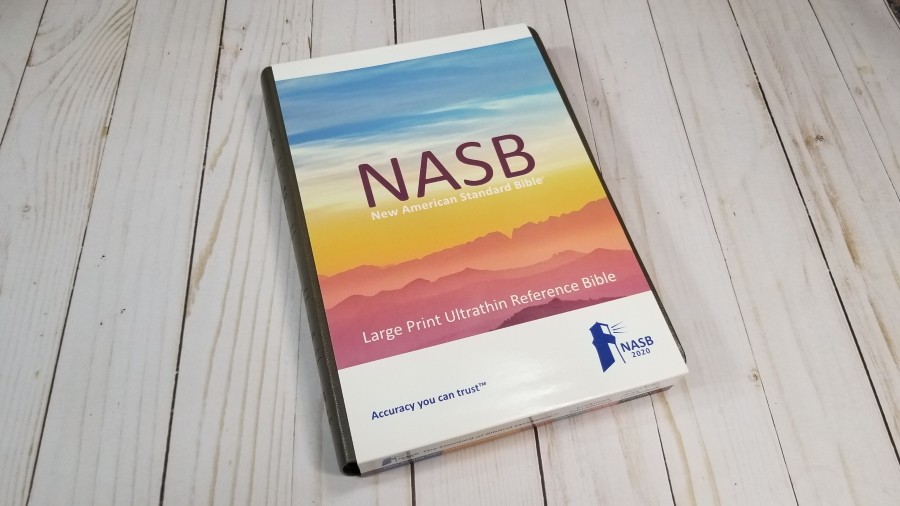


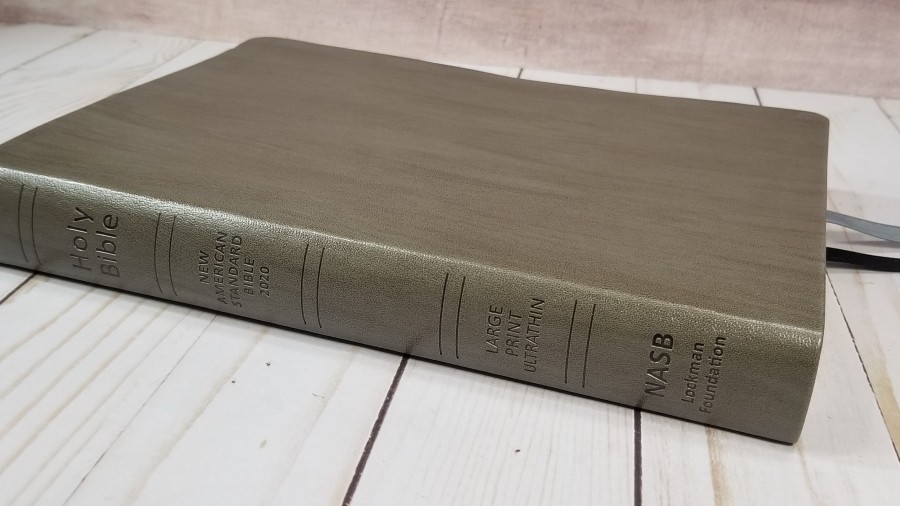

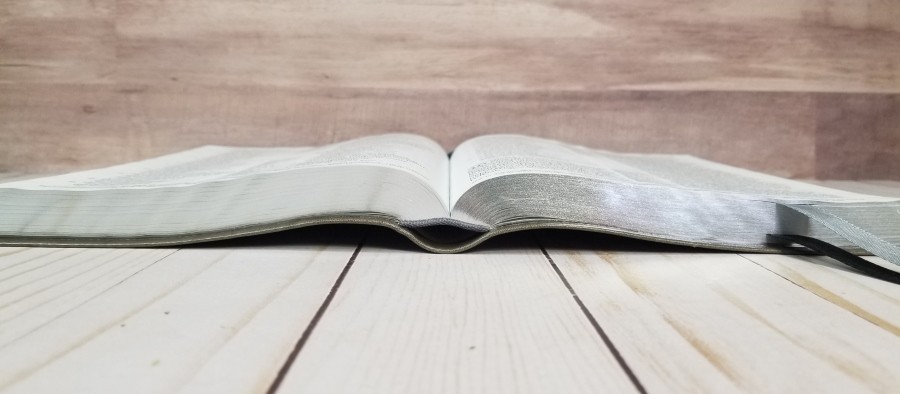
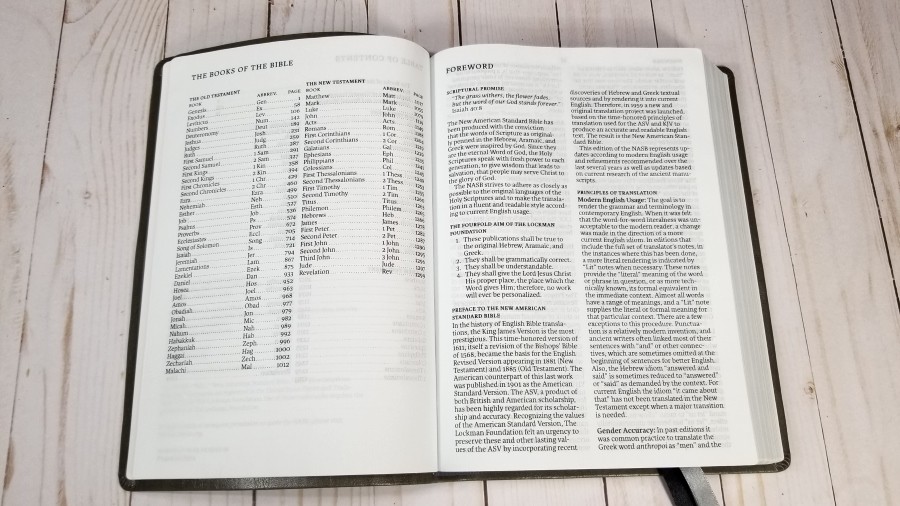
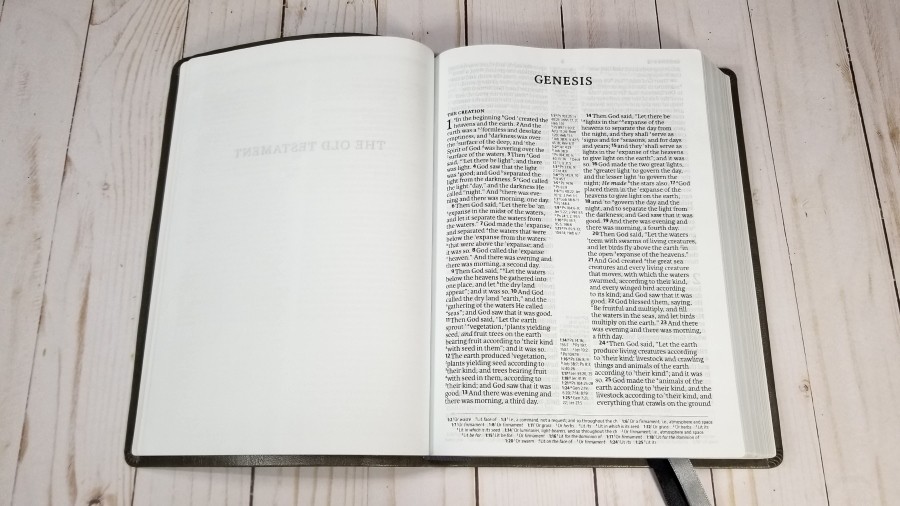
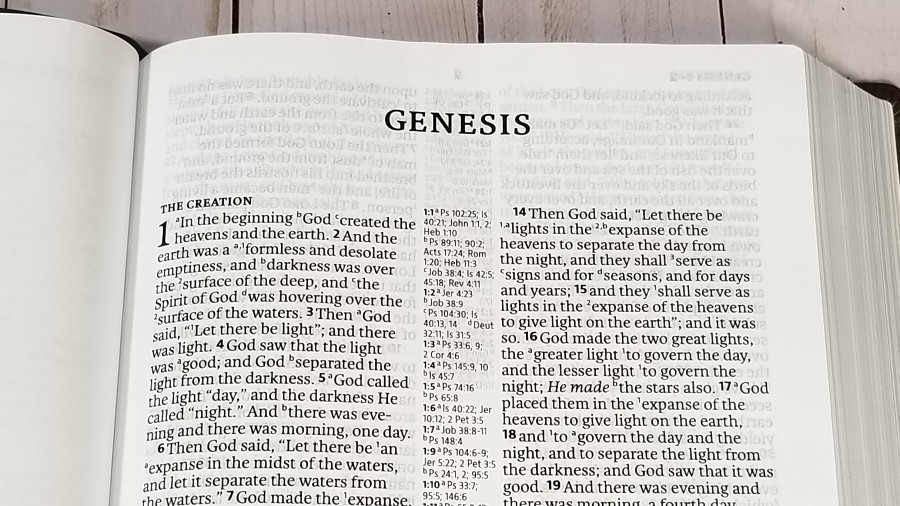
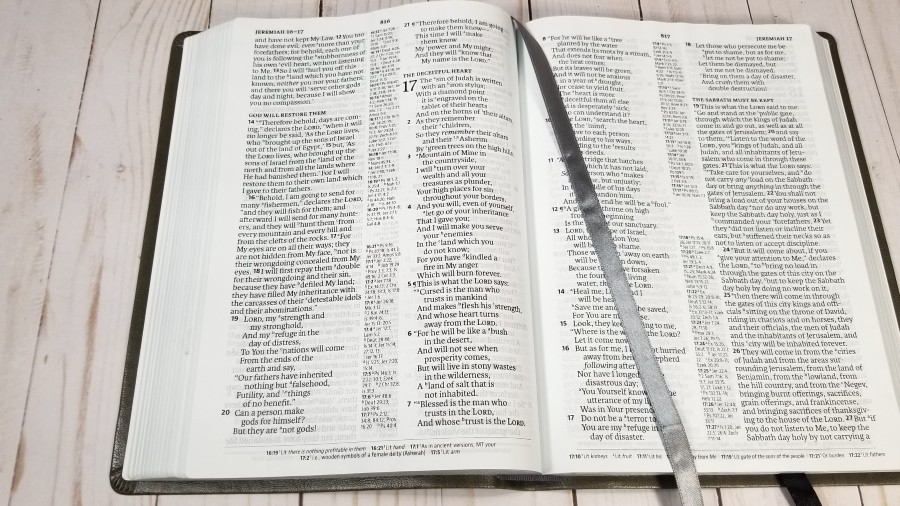
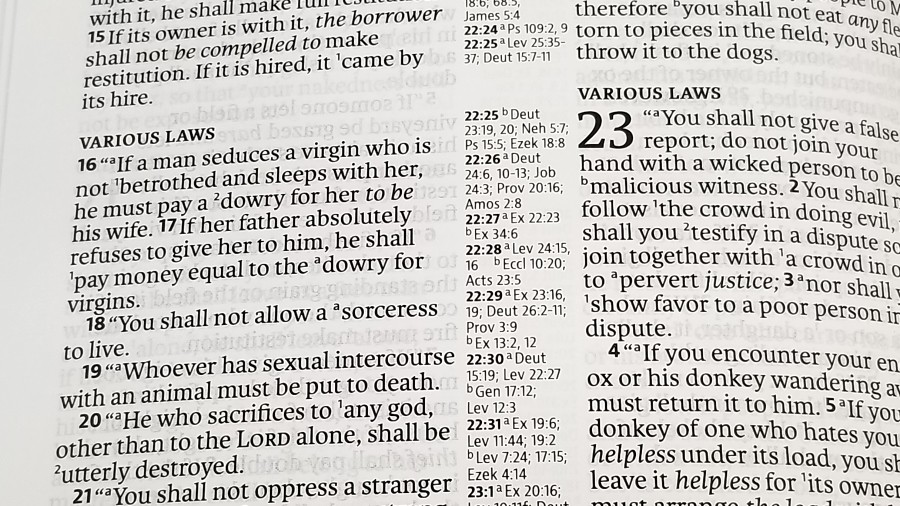

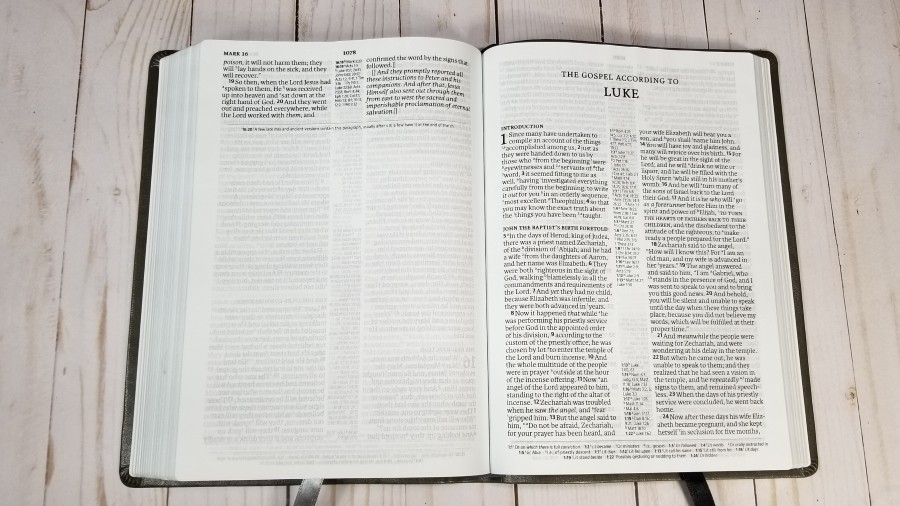
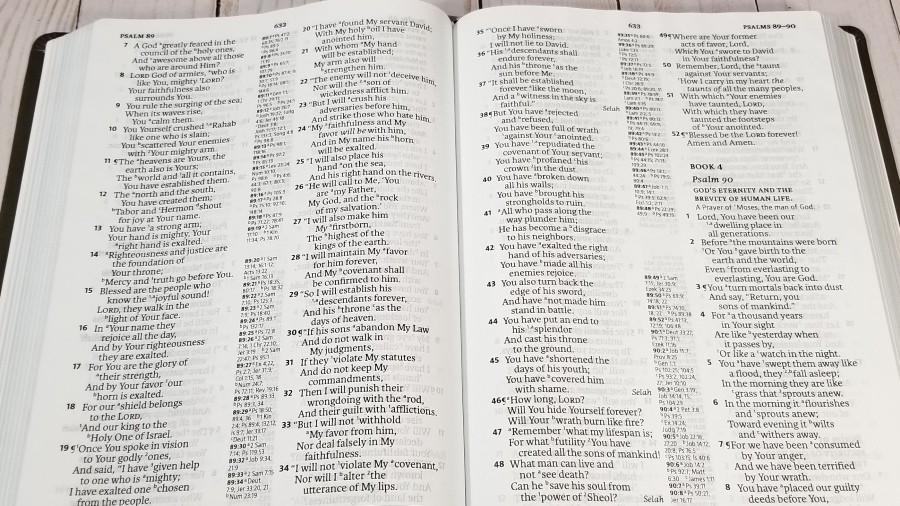
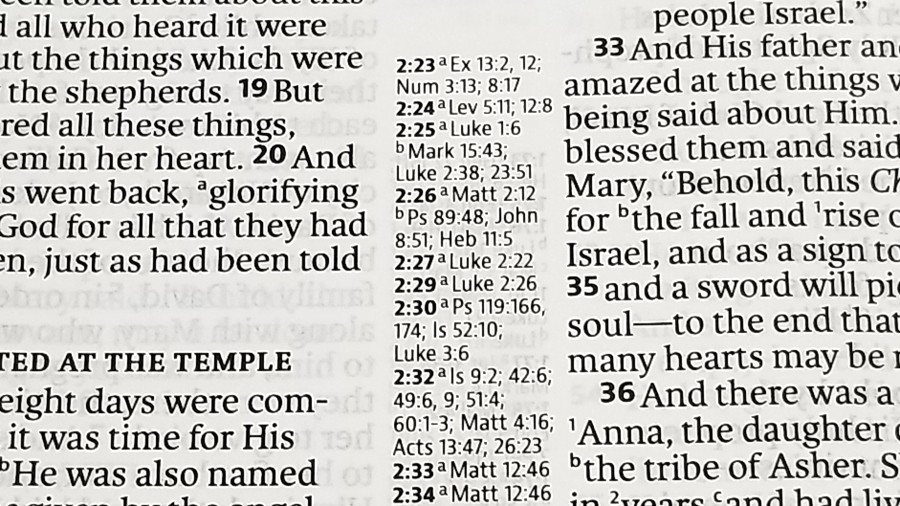
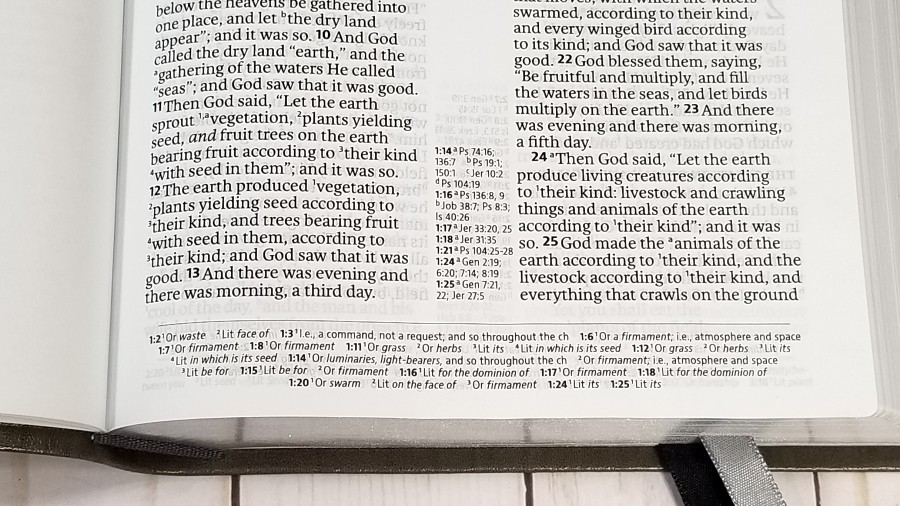
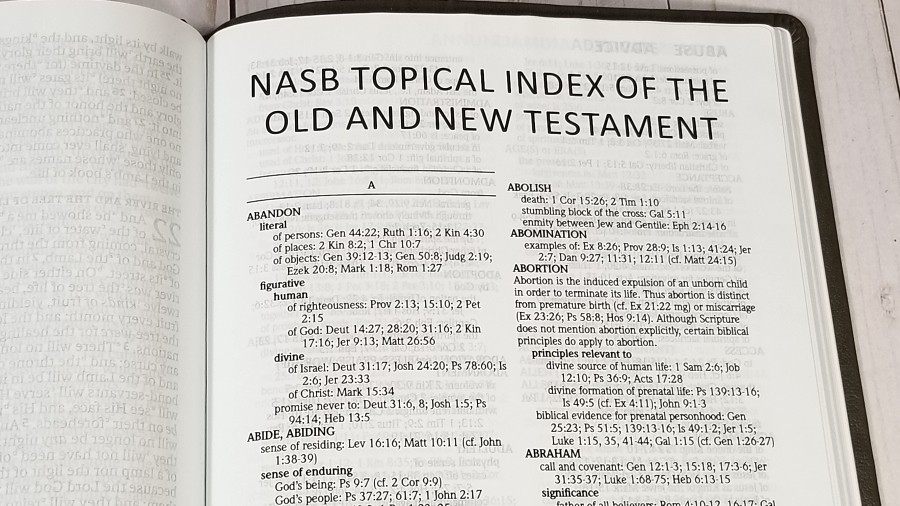

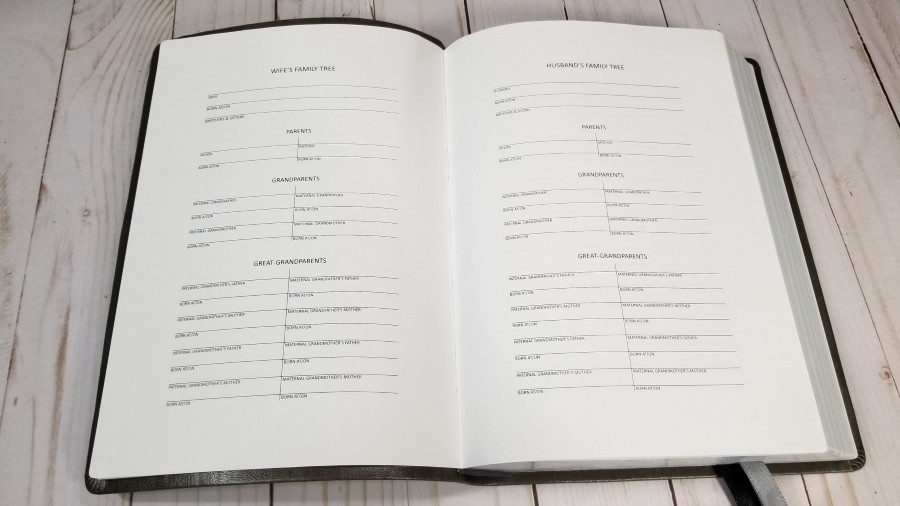
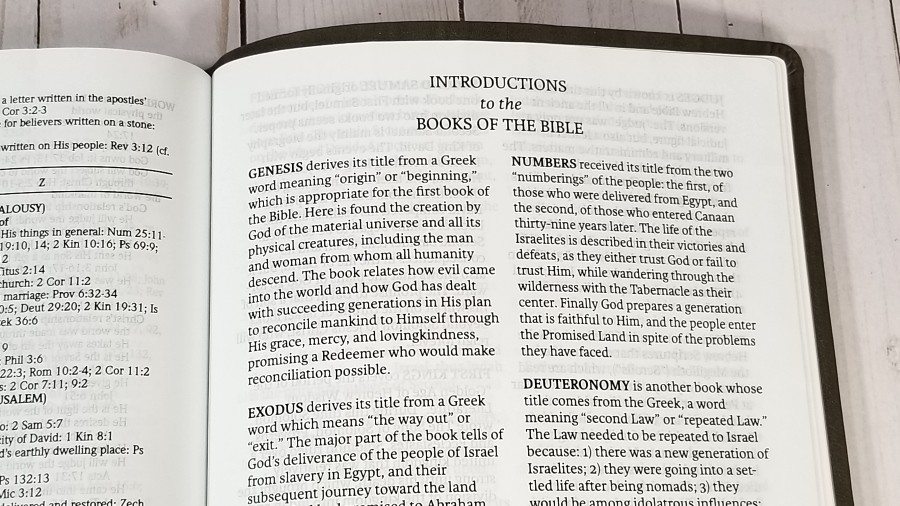
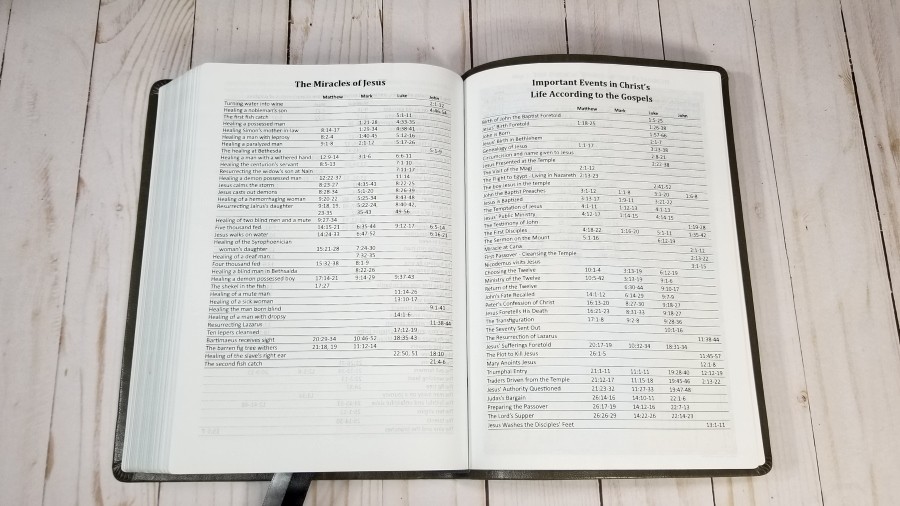
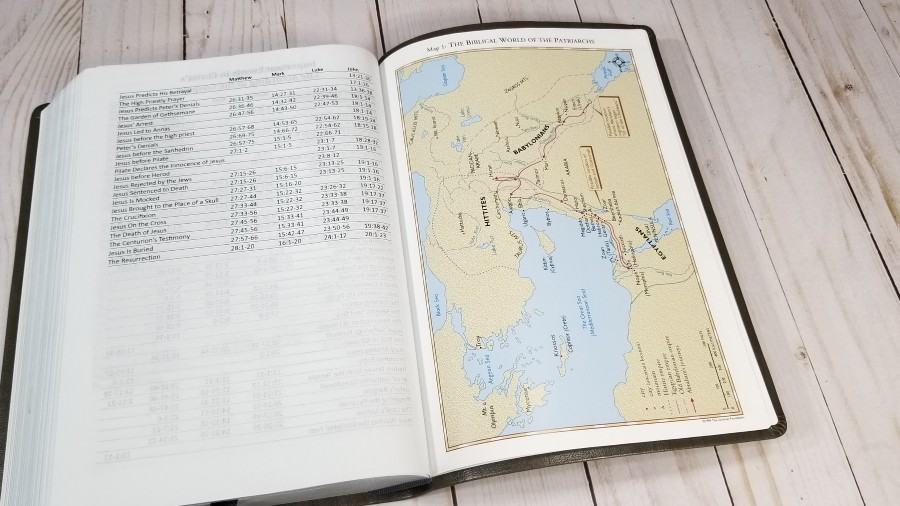

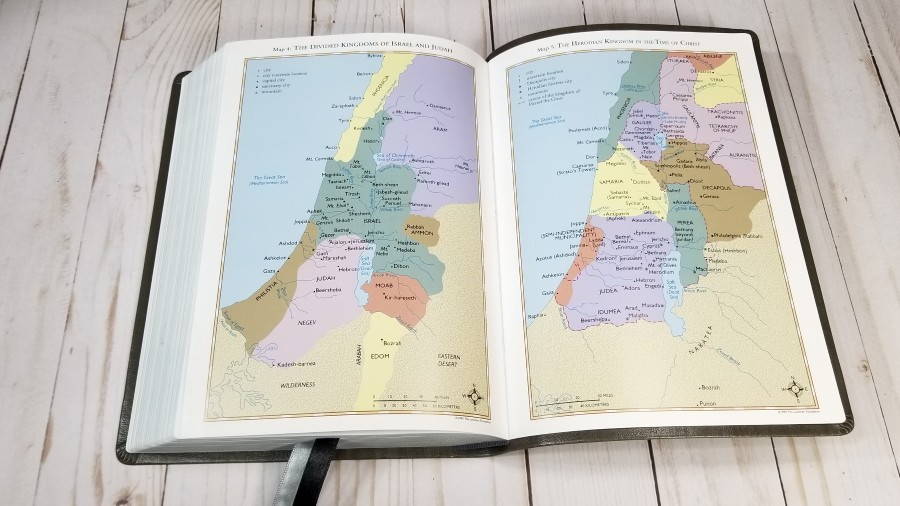



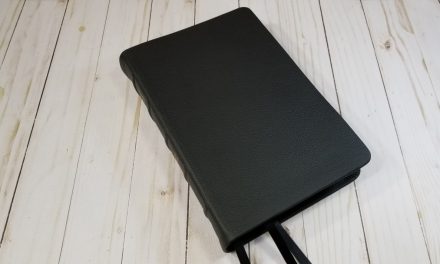
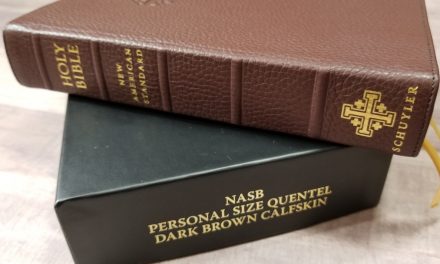
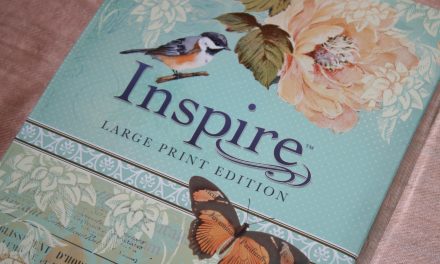
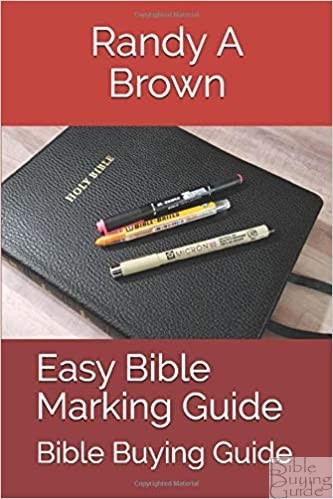
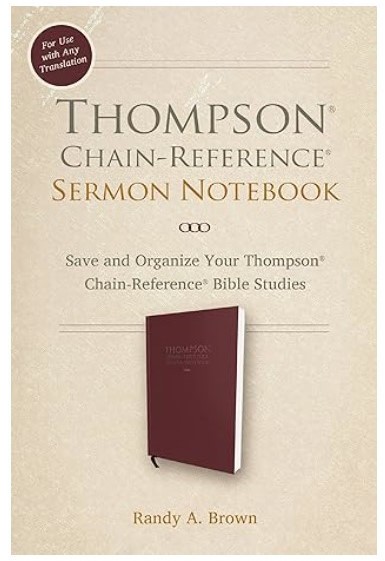
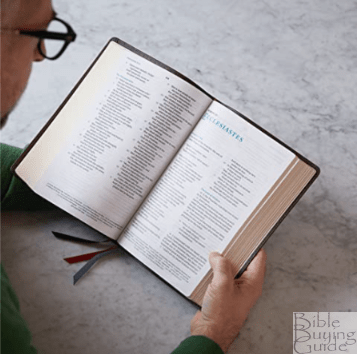

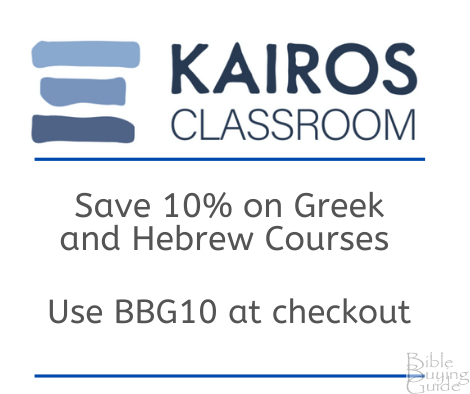
Ragged right alignment is in my view the single most underrated Bible design feature out there. Bibliotheca got this right, but very few others have. The Treveris needs/needed to be ragged right, along with any other Bible designed for smooth reading (rather than reference and study). Somebody with connections make it happen for the forthcoming ESV!! Randy, Beau, Everhard, that crazy guy Jason Mayfeild, R. Grant Jones…get the word out on RAGGED RIGHT!
I agree! This is one of the things I liked the most about the CSB Reader’s Set.
I bought this update of the NASB 2020 and wow, what a difference between the 95. The NASB 2020 is as accurate, but much more readable. It has come close to be as readable as the Holman translation. It is still a little wooden, but not much, just very little. I have read a few Books from it already and it is easier to read than the NKJV.
I appreciate your Bible reviews, you do a great job. May the Lord bless you.
If you know someone that needs to know Jesus Christ as Lord and Savior or to help them with Bible study, this will be a good blog: spiritualminefield.com
My son got me this Bible a few years ago. I have used it off an on and am now thinking about using it as my main Bible for this coming year. I am not convinced that the 2020 revision was necessary. (I feel the same about the LSB) However, the layout of this particular edition is fantastic. I find it easy to read and the references easy to access. I will admit that the “and sisters” bugs me. It is not the gender inclusivity that I have a problem with. Other translations do this without issue. My problem is that this translation is more formal and the addition breaks up the line and feels like it has been inserted, because it has been.